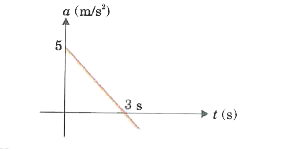Text Solution
Verified by Experts
The correct Answer is:
|
Topper's Solved these Questions
MOTION IN A STRAIGHT LINE
MODERN PUBLICATION|Exercise CHAPTER PRACTICE TEST|16 VideosView PlaylistMOTION IN A STRAIGHT LINE
MODERN PUBLICATION|Exercise COMPETITION FILE (MATRIX MATCH TYPE QUESTIONS )|1 VideosView PlaylistMOTION IN A PLANE
MODERN PUBLICATION|Exercise Chapter Practice Test|15 VideosView PlaylistOSCILLATIONS
MODERN PUBLICATION|Exercise Practice Test (For Board Examination)|12 VideosView Playlist
Similar Questions
Explore conceptually related problems
Knowledge Check
Similar Questions
Explore conceptually related problems
MODERN PUBLICATION-MOTION IN A STRAIGHT LINE -COMPETITION FILE (INTEGER TYPE QUESTIONS )
- A balloon starts rising from the ground with a constant acceleration o...
03:20
|
Play - A particle is projected vertically upwards from an elevated point. Mag...
08:45
|
Play - Particle is moving in a straight line. Distance x is related to the ti...
02:53
|
Play - A particle is moving in a straight line. All the physical quantities a...
01:53
|
Play - A particle is moving in a straight line and its velocity varies with i...
02:53
|
Play - A particle is given an initial velocity of 20m/s. acceleration of the ...
Text Solution
|
Playing Now - A particle is moving in a straight line and relationn between time and...
03:11
|
Play - A balloon starts from the state of rest from the ground with constant ...
07:59
|
Play - A rocket is moving in a gravity free space with a constnat acceleratio...
03:12
|
Play
